Wildlife Sightings North And East Yorkshire - February 2018
The weather in February was a story of big contrasts. On the 1st a moderate north-westerly wind along with relatively mild temperatures of 6° started what was to become a prolonged period of similar conditions lasting almost 25 days and peaking at 10° in Humberside on the 19th. On the 25th temperatures dropped as the first signs of the ‘Beast from the ‘East’ arrived. Bitterly cold easterlies and moderate snow fall followed with a high pressure extending eastwards from the UK into Russia. Temperatures dropped to a minimum of -6°C at Flylingdales North Yorkshire on the 28th.
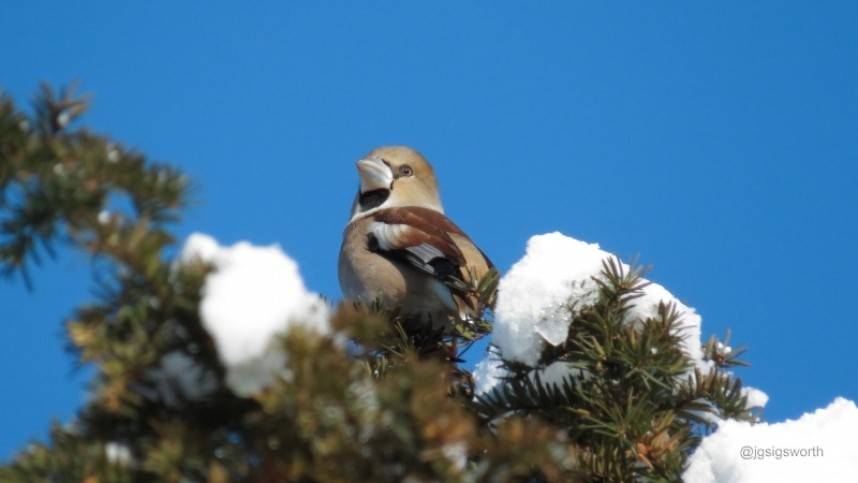
Hawfinch Thornton-le-Dale Graham Sigsworth
As daylight hours grew slightly longer there were some great opportunities to enjoy winter and early spring wildlife across North and East Yorkshire especially during the first three weeks! Long staying scarce birds started the show with the now notorious Glaucous Gull still feasting on injured birds at Top Hill Low, the Green-winged Teal at Kilnsea and another at North Cave Wetlands YWT, single male Ring Ouzels at Easington and Brompton, and Rosy Starling at Easington. Hawfinches showed no signs of moving on during this time, quite the opposite at Brompton where a winter maximum of 19 was counted on the 2nd. 30+ were counted at Yorkshire Arboretum on the 4th, 26 at Fountains Abbey on the 3rd and 20 at East Gilling on the 5th. 15 were at Rosedale abbey on the 4th with up to 30 seen flying over the same site a day later. The biggest count of the month came again from the Arboretum with 145+ seen on the 15th. An excellent count of 72 Purple Sandpipers was made on the East Pier at Scarborough on the 5th. In the far north of the county the regular Spitsbergen ringed Purple Sandpiper was still showing well at Redcar. Fantastic to hear where our Purple Sandpipers are breeding thanks to sharp eyed birders reading rings on live birds!
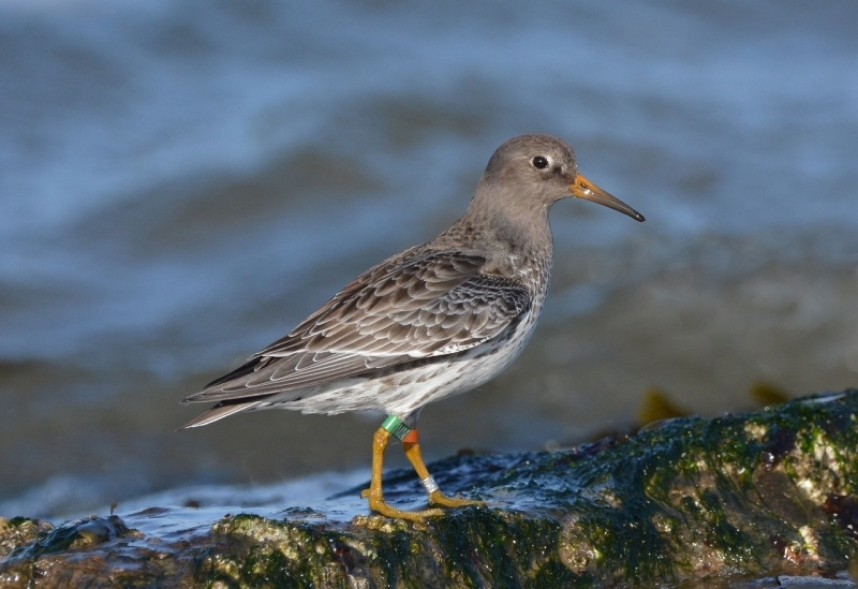
Purple Sandpiper from Spitsbergen at Redcar © Damian Money
New interesting sightings during the first week included a drake Smew at Castle Howard Lake, a Cattle Egret by the canal at Gargrave on the 3rd and a Black-necked Grebe at Scaling Dam. A Black Redstart appeared at Spurn on the 2nd. A bigger surprise was a juvenile Pomarine Skua at South Landing Flamborough on the 4th eventually flying north past the Fog Station. A Glossy Ibis flew over Hornsea on the 7th. Small numbers of Eurasian White-fronted Geese were still present at Flamborough and five were at Lockwood Beck Reservoir. The Twite flock were still in residence at South Gare on the 7th when at least 100 were seen. White winged Arctic gulls were still present at Rufforth tip early in the month despite it being a far quitter winter this year than in 2016 for these species. The 6th was a good day with two Glaucous Gulls and one Iceland Gull seen.
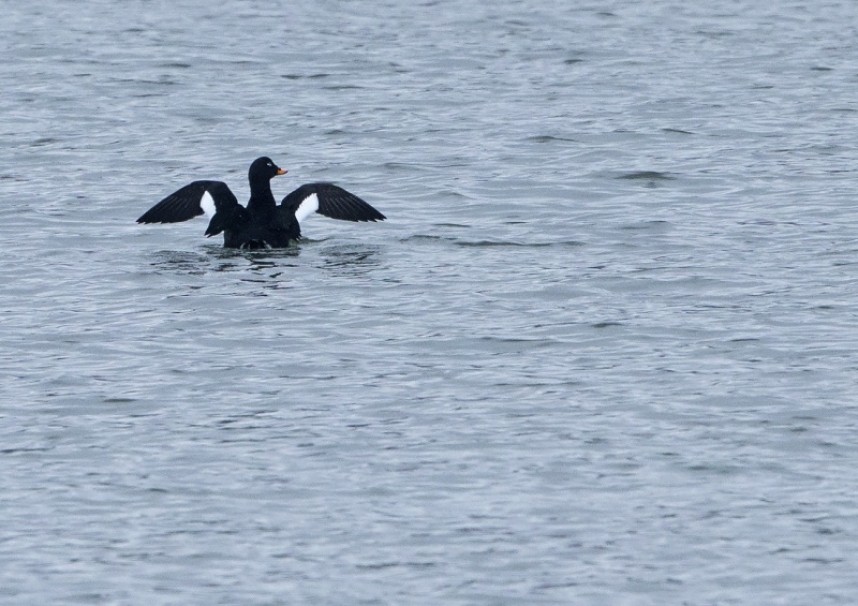
Velvet Scoter Scarborough © Steve Race
A very smart male Velvet Scoter close inshore off Scarborough was appreciated by birders on the 6th. The male American Wigeon was seen again at Wheldrake on the 9th, with thousands of Eurasian Wigeon at this site it’s no surprise it goes missing for many days. A Eurasian Bittern was at the same site on the 14th. A record movement of Great Cormorants was recorded at Spurn on the 10th with 278 recorded; the record was broken again on the 22nd when 309 were counted leaving the roost at the old fort in the middle of the Humber. On the same day a Yellowhammer was heard singing at Sawdon. Across the region we were surrounded by the early morning song of many other early nesting birds as the mild weather and longer days pumped up the volume. 200 Black-tailed Godwit were present at Kilnsea on the 12th along with 800 Eurasian Wigeon.
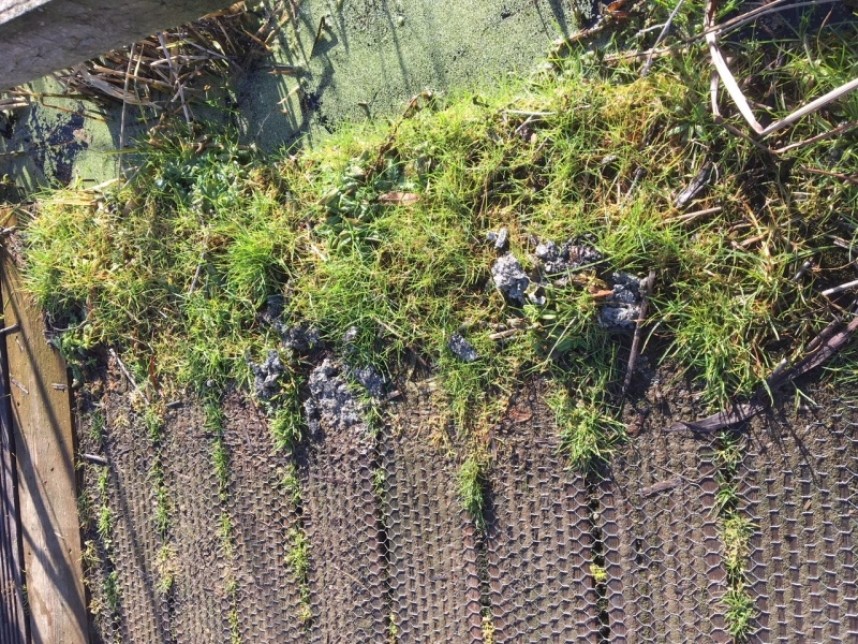
Otter Spraint at Filey Dams © Dan Lombard
The biggest surprise in the Spurn area on the 12th was two Otters captured running across a lawn on an overnight trail camera in a local garden. What may have been a coincidence or not… a few days later on the 15th a large amount of new Otter spraint was found at Filey maybe these sightings were a sign of pre-breeding movement as the milder weather kicked in.
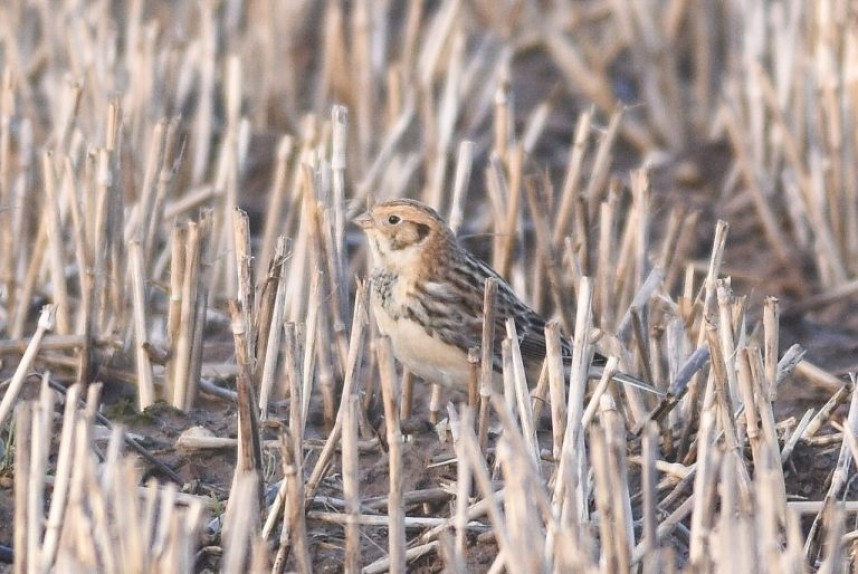
Lapland Bunting at Flamborough © Andy Hood
Jack Snipe have been very scarce this winter so the almost daily presence of one at Thornwick Pools Flamborough was great to hear. Even better were three seen here on the last day of the month. Not far away from Thornwick, the southern cliffs of Flamborough Headland scored a great count of 70 Great Crested Grebes on the 12th. This area has always been good for wintering grebes especially in the area closer to Danes Dyke and Sewerby. Flamborough continued to be the only reliable location for finding Lapland Buntings this winter. 11 were seen on the 16th on the Headland. On the same day a Long-eared Owl appeared in the dell by Bempton RSPB visitor Centre, a traditional site but with no recent sightings this was greatly appreciated by visitors. An adult Caspian Gull was at Rufforth Tip on the 17th. On the same day the Flamborough Great Crested Grebe flock rose to 79! The 17th and 18th were noticeable movement days for large wildfowl. 190 Pink-footed Geese flew north at Filey on the 17th, then another 360 flew north past Long Nab in eight flocks on the 18th. The movement was also seen at Spurn but with far fewer birds, only 35 Pink-footed Geese. Two Whooper Swans flew past Flamborough and past Spurn on the 18th one of very few reports on the coast this month away from wintering areas in the Lower Derwent Valley. Spurn birders recorded the first sight of breeding Common Frog and Smooth Newts moving into ponds on the 18th.
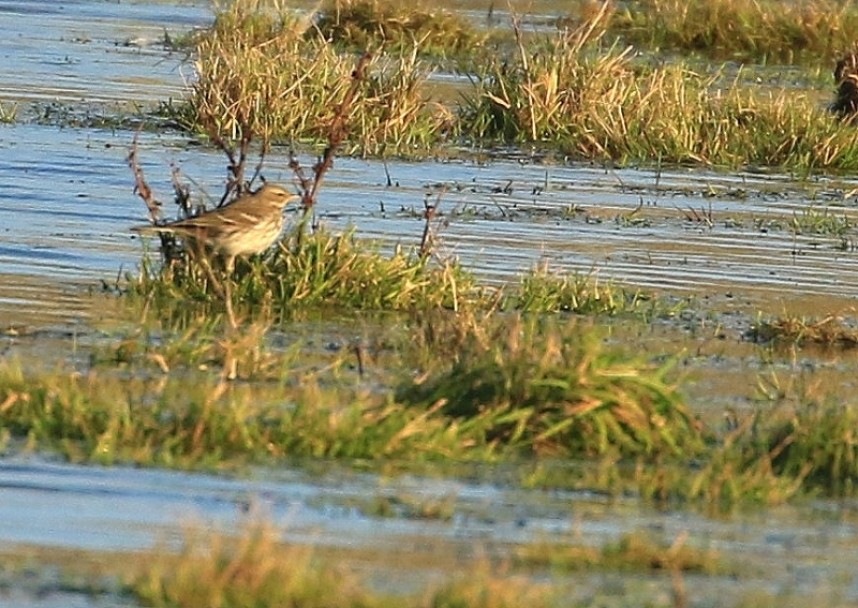
Water Pipit Filey East Lea © Dan Lombard
With very few cetacean sightings over the winter, the sight of 18 Bottle-nosed Dolphin moving slowly south past Flamborough Headland on the 21st must have been very exciting for local wildlife watchers. On the same day, two Tundra Bean Geese were seen at Hornsea Mere and another two were at Potter Brompton Carr on the 24th. The two Hornsea Tundra Bean Geese were then seen again on the 24th and to the month end in the Swan Island and nearby field on the southern side of the Mere. 17 White-fronted Geese at Pulfin YWT and High Esk Nr on the 21st was the biggest number in our area this month. The Great Egret at Wykeham showed again on the 22nd. A Water Pipit was a good local find at Filey on the 24th and it was still showing intermittently several days later at Filey Dams. On the same day an excellent count was made of 200 Brambling at Wilton Heights near Scarborough. Small numbers of Bohemian Waxwing were trickling in all month but only in ones and twos. Three at Skelton on the 13th and four seen in the Scarborough area on the 18th and 26th were the biggest ‘flocks’. A Red-necked Grebe was off South Landing on the 27th.
Many thanks to all the observers who contributed sightings and photographs. This article covers North and East Yorkshire. For more wildlife sightings visit these great local, regional and national web sites
Spurn Bird Observatory, Flamborough Bird Observatory, Filey Bird Observatory and Group, Northern Rustic blogspot , Yorkshire Naturalists Union, Yorkshire Wildlife Trust, Scarborough Birders, Butterfly Conservation Yorkshire Branch Yorkshire Nature Traingle For National News: Birdguides
Richard Baines
Yorkshire Coast Nature



 Back to Blog
Back to Blog
